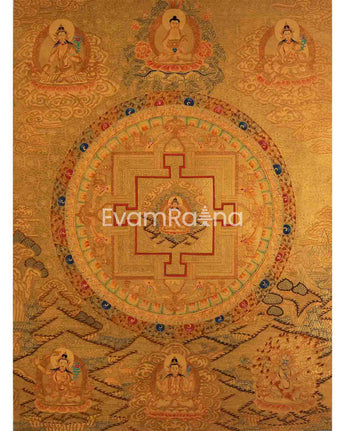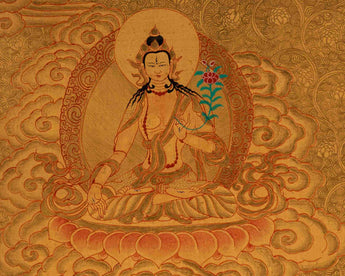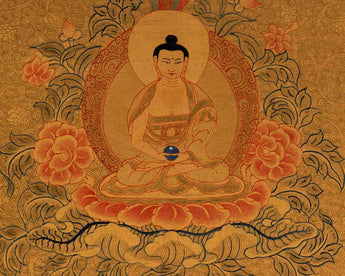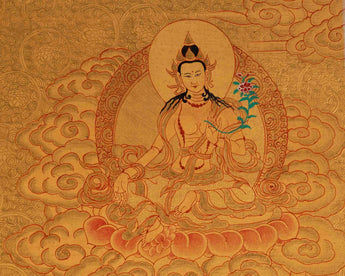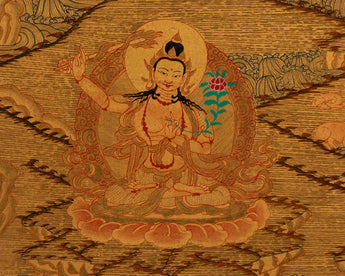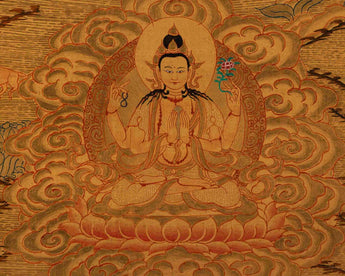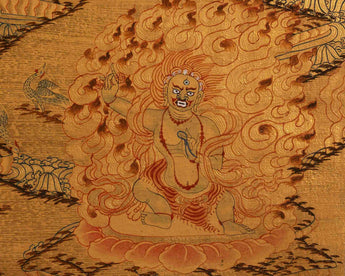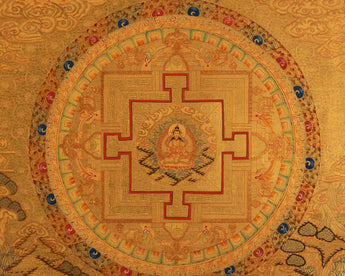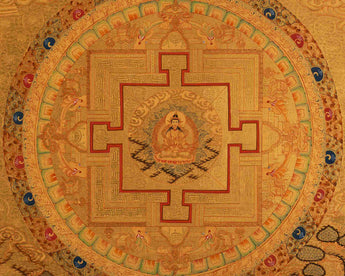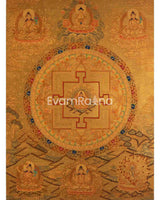
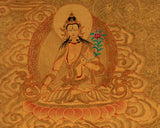
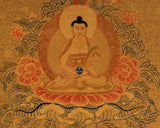
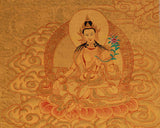
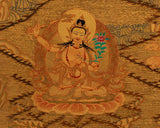
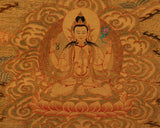
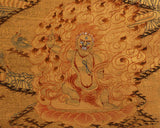
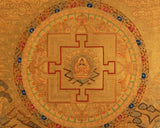
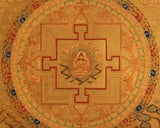
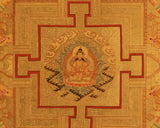
Vajrasattva Mandala Thangka | Buddhist Gift Ideas

100% AUTHENTIC

HANDPAINTED

FREE SHIPPING
Vajrasattva Mandala Thangka
Vajrasattva
In Tibetan Buddhism, Vajrasatva is associated with the sambhogakāya and purification practice.
In the Shingon Buddhist lineage, Vajrasatva is traditionally viewed as the second patriarch, the first being Vairocana Buddha. According to Kukai's writings in Record of the Dharma Transmission, he relates a story based on Amoghavajra's account that Nagarjuna met Vajrasatva in an iron tower in southern India. Vajrasatva initiated Nagarjuna into the abhiseka ritual and entrusted him with the esoteric teachings he had learned from Vairocana Buddha, as depicted in the Mahavairocana Sutra. Kukai does not elaborate further on Vajrasatva or his origins.
His left hand holds a bell, which rests on his hip. This is an expression of his compassion. The hundred-syllable mantra associated with him is used in all Tibetan Buddhism schools to purify the mind.
Medicine Buddha in the Centre Mandala Thangka, Tibetan Buddhist Painting
The Buddha has a long- lobed ears and curly hair. He wears a monastic robe and is seated cross-legged . The blue or lapis lazuli color of the body symbolizes that he accepts all the diseases and sicknesses of all suffering beings. The plant myrobalan represents the medicine which heals all the sicknesses of sentient beings.
Medicine buddha or the healing Buddha, is said to dispense spiritual medicine when adequately worshipped. It is even believed that an efficacious cure may be accomplished by merely touching the image. His right hand holds a branch of myrobalan plant and it is in the varadamudra posture or the giving gesture. His left hand is on his lap, holding a lapis lazuli pindapatra or a container containing medicines.
------------------------------------------------------------------
Size: 43 cm (width) x 58 cm (height)
Materials: Cotton Canvas, Acrylic Colors, Genuine 24K Gold
------------------------------------------------------------------
THIS THANGKA IS HAND-PAINTED IN THE TRADITIONAL STYLE AND THE QUALITY IS HIGH
------------------------------------------------------------------
How does Thangka benefit us?
It goes without saying that every detail of a painting has a symbolic meaning. Regardless of your religious affiliation, a thangka can help you on your path to enlightenment, whether you practice Buddhism or have other religious convictions. Thangkas are paintings that depict deities with various iconographic elements and symbolism that encourage meditation on the teachings of the god they depict. Any thangka is intended to aid in the removal of the film of ignorance, which is a significant barrier to the road to enlightenment. The Thangka is revered as a holy item. They promote positivity, spread Buddhism's teachings, bring about peace, harmony, and oneness, and dispel any negative energy that may be there.
How to Take Care of Your Thangka?
- Hang your thangka in a traditional silk brocade.
- Regularly inspect your thangka; examine the borders and all attachments.
- Keep thangkas covered when they are on display but not in use.
- Rotate thangkas between display and storage two to four times a year to reduce exposure to light. Keep them away from sunlight and humidity.
- Do not apply liquids or other materials to the surface of the thangka.


